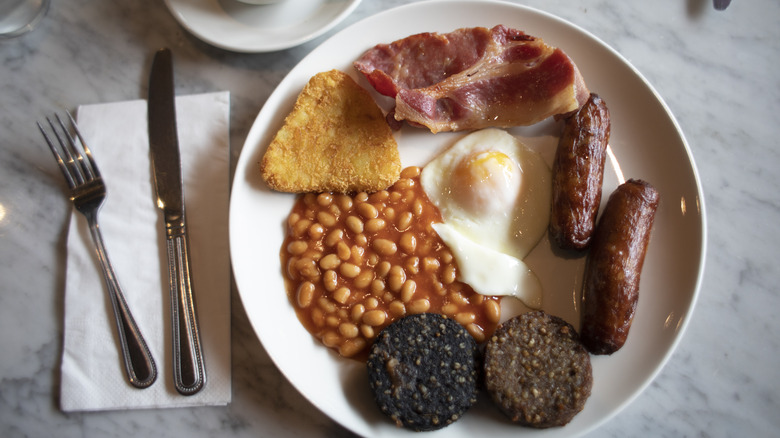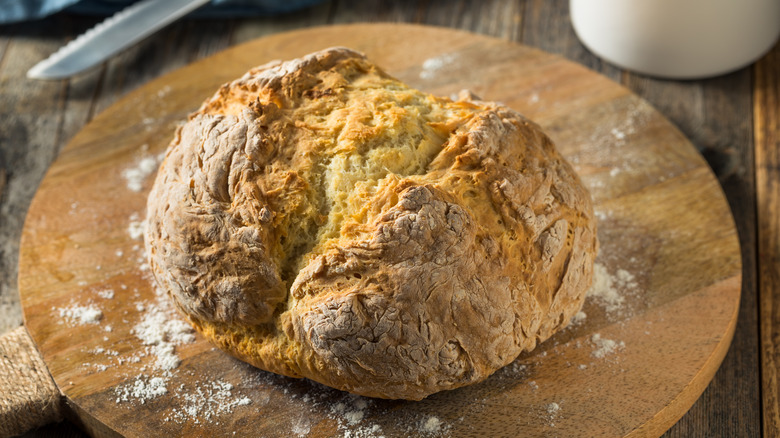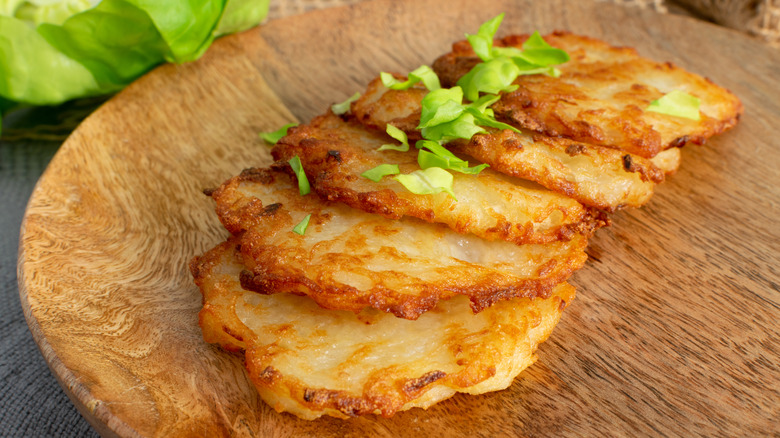The Component That Makes An Ulster Fry Different From Irish Breakfast
It's easy to muse about the fantasia that is Irish foods and beverages while you're knocking back a pint of Guinness. Corned beef and cabbage on Saint Patrick's Day, anyone? But, many of Ireland's other signature offerings are meant to be enjoyed around the everyday dinner table. The smorgasbord ranges from more accessible traditional Irish dishes like shepherd's pie and shortbread, to less popular offerings like barmbrack and colcannon. Today, we're deep-diving into one of Ireland's most famous contributions to the culinary world: breakfast. Even Anthony Bourdain raved, "No morning in Ireland is fully experienced without the sublime wonder of a traditional Irish breakfast." Luckily, foodies around the world don't have to travel all the way to The Emerald Isle for a taste. Fado Irish Pub in Chicago makes a killer full Irish breakfast, and it's also fairly simple to recreate at home. But diehard Irish breakfast fans might argue that, for the real thing, there really are no substitutes.
Technically, Ireland's breakfast contribution is actually two contributions. The country's morning feast varies depending on which region of the country you wake up in. Sit down to breakfast in Southern Ireland and you'll find a "full Irish breakfast." In Northern Ireland, folks are sitting down for an Ulster fry. So, what makes an Ulster Fry different from an Irish breakfast? Believe it or not, the difference is just one component.
Dig into a full Irish for some soda bread
The full Irish breakfast is specifically designed to put some meat on your bones. (Pun intended.) The spread was created by Irish farmers who would fuel up with a large meal at the beginning of a workday. But it's also a decidedly meat-forward dish. The brekky starts off with pork back bacon (locally known as rashers), pork sausage, and black and white pudding. Then comes fried eggs, sauteed button mushrooms, and fried tomatoes. A key component of a full Irish breakfast is soda bread, often enjoyed with Irish butter like Kerrygold. (If you don't happen to live in Dublin, Mary O's in Manhattan cranks out some of the best Irish soda bread in the U.S.) It all gets washed down with a cup of black tea with milk. If you've ever spied "Irish breakfast tea" in your local grocery store's coffee and tea aisle, this is where it gets its name.
Today, the full Irish breakfast is less commonly enjoyed as an everyday meal, but that doesn't mean it has become any less popular. On weekend mornings, one can commonly find a full Irish on the table in many households across the country.
Ulster fries are serving up potato pancakes
The key component that separates an Ulster fry from a full Irish breakfast is potato pancakes. Like a full Irish breakfast, the Ulster fry consists of bacon, sausage, fried eggs, and black pudding. But, uniquely, fry-ups offer both soda bread and potatoes, often in the form of potato bread or potato pancakes called farls or boxty.
Also unlike an Irish breakfast, Ulster fries sometimes include baked beans, similar to the nearby "full English" morning meal. In fact, the full Irish breakfast is thought to have evolved from England's traditional breakfast due to the two countries' proximity. Full Englishes first began cropping up around the 13th century, and the Irish iteration is thought to have emerged around the same time.
Ulster fries are also referred to by locals as "fry-ups," and they're a major part of Northern Irish culture. Television personality and Northern Ireland native Christine Lampard lauds the Ulster fry as "a magnificent feast," via local news outlet The Irish Post. "Can you imagine a life without ever having tried a fry-up, a good Ulster fry where I'm from?" Lampard asks the outlet.


